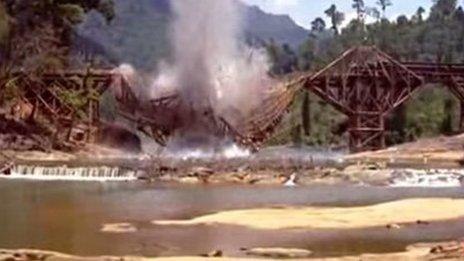Blue plaque for Bridge on River Kwai hero
- Published
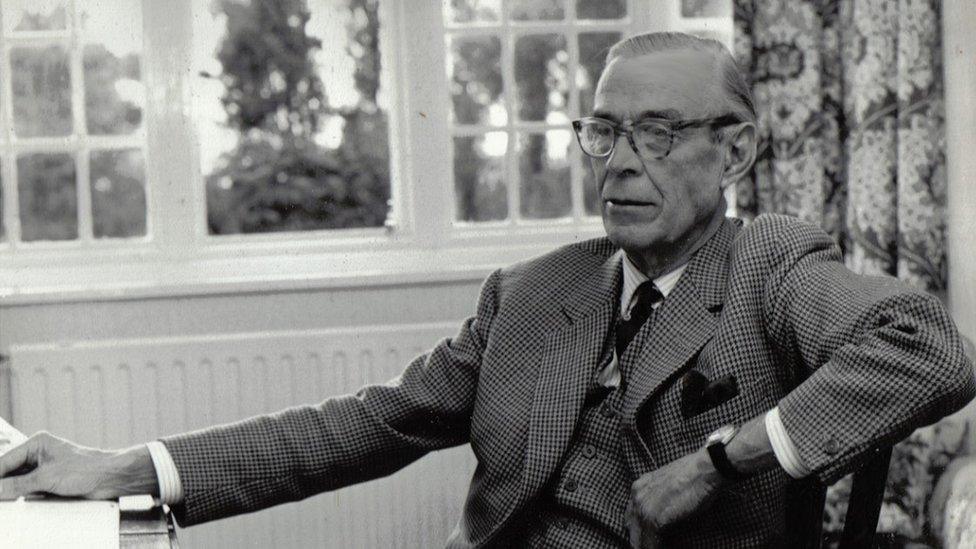
Brigadier Sir Philip Toosey was a prisoner of war in a camp set up by the Japanese
A man who was the inspiration for Sir Alec Guinness's character in the film The Bridge on the River Kwai has been commemorated with a blue plaque.
Brigadier Sir Philip Toosey was the senior Allied officer in a World War Two camp set up by the Japanese in Thailand to build a railway.
Two former prisoners of war, both in their 90s, unveiled the plaque at his former home in Oxton, Merseyside.
Sir Philip's son Patrick said it was "a proud moment".

The 'death railway'
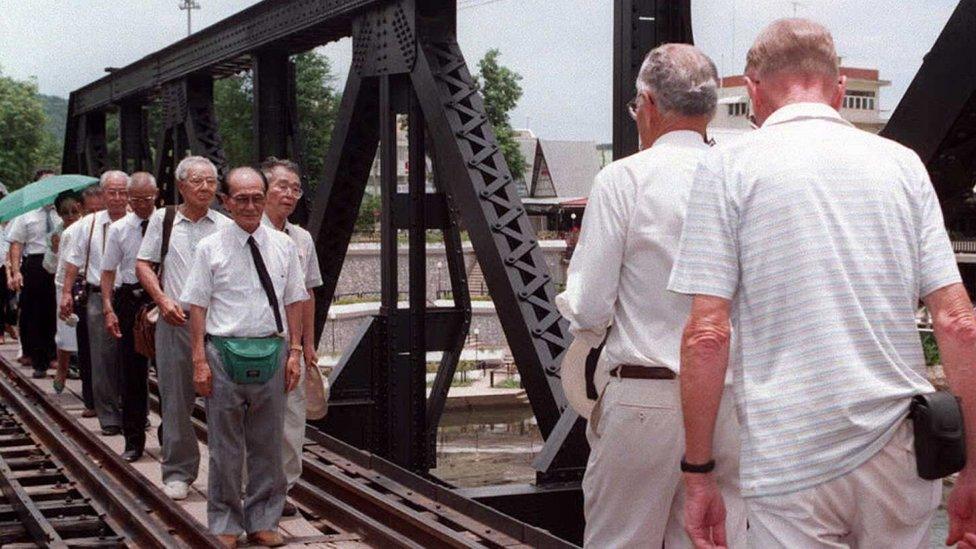
Former prisoners of war meet Japanese veterans on the bridge during war commemorations in 1995
About 60,000 Allied prisoners of war were forced by the Japanese to build a railway between Thailand and Myanmar (also known as Burma)
Considered to be among the worst atrocities of the war, it included the construction of bridges over the Kwai River
Overall, the railway project led to the deaths of 90,000 Asian civilian workers and 16,000 PoWs
Most of it was dismantled after the war
The project inspired Pierre Boulle's 1952 novel The Bridge on the River Kwai and the Oscar-winning film
Sir Philip, who was a lieutenant colonel during his time in the camp, was the basis for Sir Alec Guinness's Oscar-winning performance of Colonel Nicholson but the film was criticised for its "Hollywood" version of events.
The Col Nicholson character advocated the completion of the bridge as a legacy of British workmanship, contrary to what happened in real life.
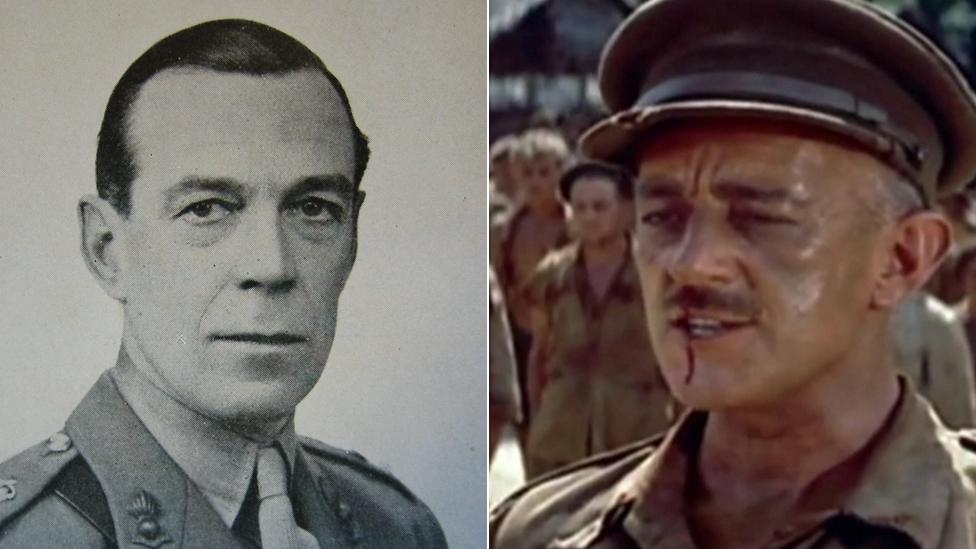
Lt. Col Toosey (left) formed the basis for Sir Alec Guinness's character in the film
Rhiannon Evans, chair of the Oxton Society, said: "He had attempted to delay progress with badly mixed concrete, infestation of wood-destroying termites and the persuasion of his captors to grant his men a day off each week to conserve energy.
"He had refused evacuation from Singapore [which fell to Japanese forces in 1942], choosing to stay with his men, and did everything he could to improve their miserable existence in Tamarkan with smuggled medicines and food."
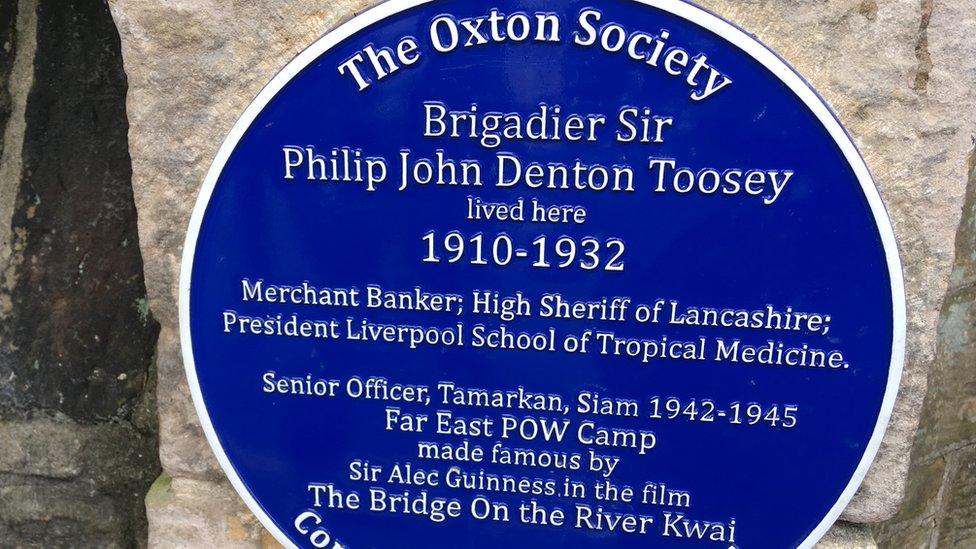
The plaque is outside Sir Philip's former home in Oxton
Mr Toosey said his father thought the film was "good theatre but totally removed from reality".
"Certainly Sir Alec never forgot the distortion and embellishments. In fact, he wrote to us shortly before his death and remained angry about the issue to that day."
The plaque was unveiled by former gunners Maurice Naylor, 96, and Fergus Anckorn, 98, who were in the camp for more than two years.
Sir Philip died aged 71 in 1975.
- Published29 August 2014
